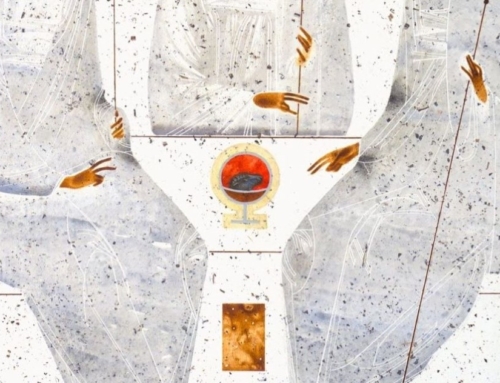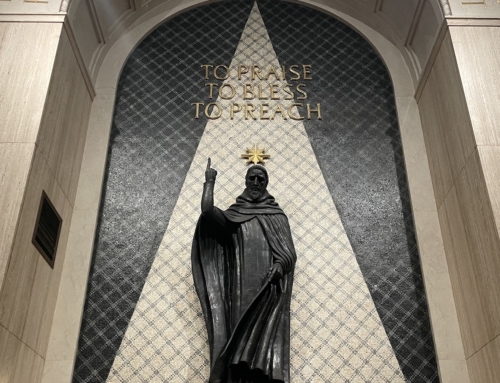There are these jaw-dropping moments in the life of a scientist. . . You can feel in your brain how all these preconceived ideas you had start falling to pieces.
So said neurobiologist Christoph Zollikofer in response to the discovery of a 1.8 million year old hominid skull at Dmanisi in Georgia. As reported recently in the Wall Street Journal, this perfectly preserved “early human” skull provides evidence that a single hominid species, Homo erectus, emerged out of Africa about 2 million years ago. Dr. Zollikofer is excited because the discovery simplifies the paleontologist’s tree of hominid species dramatically.
The tree may be simplified, but the terminology employed in the reporting is philosophically dangerous: Homo erectus is not human—Homo erectus was probably extinct before Homo sapiens even left Africa.
Calling pre-human hominid species “early human” is another keystroke in the materialist rewriting of human nature. Materialist philosophical assumptions are woven into the presentation of scientific speculation, and an alternative narrative informing human nature is advanced. Man is not made in the image of God—he is the ape that survived. The Australopithecus manikin couple, strolling with one arm around the other, seemingly engaged in conversation, is a more subtle example of the same dynamic one can find at the American Museum of Natural History.
There is good ground for criticism here, but critique alone cannot overcome a narrative. The materialists have told their story—the Christians must tell theirs. To that end I would like to direct attention to an article by Kenneth W. Kemp, professor of Philosophy at the University of St. Thomas.
In this article, Kemp shows that there is no contradiction between belief in man’s descent from an original couple (monogenism) and the scientific findings of evolutionary biology and modern genetics. Kemp takes up the challenge which any Christian narrative of human origins must face; namely, how to reconcile our faith in a first couple, “Adam” and “Eve,” with the archeological evidence that supports a theory of human origins supposing multiple genetic ancestors arising from a single region.
Kemp advances his argument by making a very classical philosophical distinction: While a certain kind of body is necessary for rational activity (i.e. having requisite brain size), it is not sufficient for it. Rational activity requires a rational soul, because as philosophers of mind rightly point out, conceptual thought exceeds the power of any bodily organ. This rational soul cannot be created from any material cause, but must be created directly by God. Therefore, prepared by God over ages of evolutionary adaptation, our most proximate hominid ancestors would have been like humans in all things but lack a rational soul—we would belong to the same biological species (group which can interbreed), but not to the same philosophical or theological species. Thus opens up the possibility of a Christian account of human origins:
[Assuming a population reduction due to the Toba supereruption around 70,000 BC, the] account can begin with a population of about 5,000 hominids, beings which are in many respects like human beings, but which lack the capacity for intellectual thought. Out of this population, God selects two and endows them with intellects by creating for them rational souls, giving them at the same time those preternatural gifts the possession of which constitutes original justice.
Only beings with rational souls (with or without the preternatural gifts) are truly human. The first two theologically human beings misuse their free will, however, by choosing to commit a (the original) sin, thereby losing the preternatural gifts, though not the offer of divine friendship by virtue of which they remain theologically (not just philosophically) distinct from their merely biologically human ancestors and cousins. These first true human beings also have descendants, which continue, to some extent, to interbreed with the non-intellectual hominids among whom they live.
If God endows each individual that has even a single human ancestor with an intellect of its own, a reasonable rate of reproductive success and a reasonable selective advantage would easily replace a non-intellectual hominid population of 5,000 individuals with a philosophically (and, if the two concepts are extensionally equivalent, theologically) human population within three centuries. Throughout this process, all theologically human beings would be descended from a single original human couple (in the sense of having that human couple among their ancestors) without there ever having been a population bottleneck in the human species.
Kemp’s account is hypothetical and speculative, as are all prehistoric reconstructions, but trusting the light of faith and reason, he takes a bold step in the right direction. We must reclaim the narrative that defines human nature. This is the story that defines you. Let the materialist examine his unreflective assumptions and say, “You can feel in your brain how all these preconceived ideas start falling to pieces.”
✠






